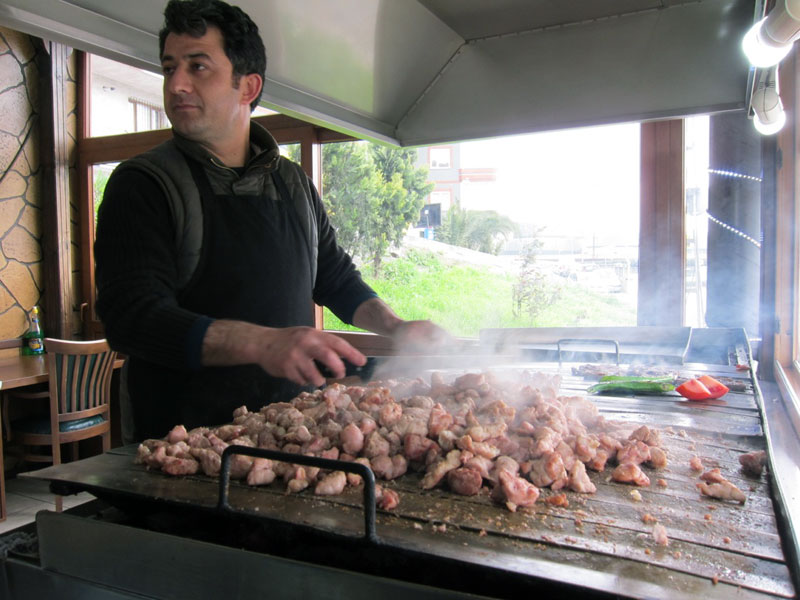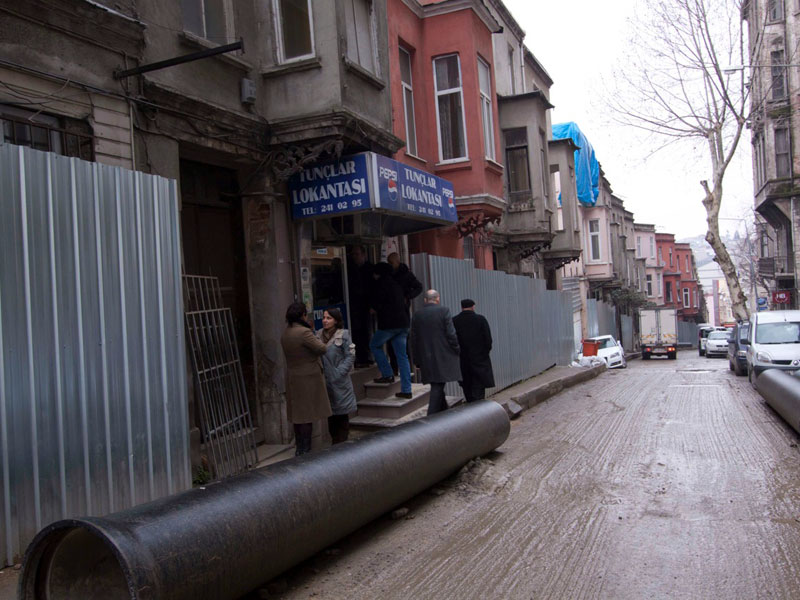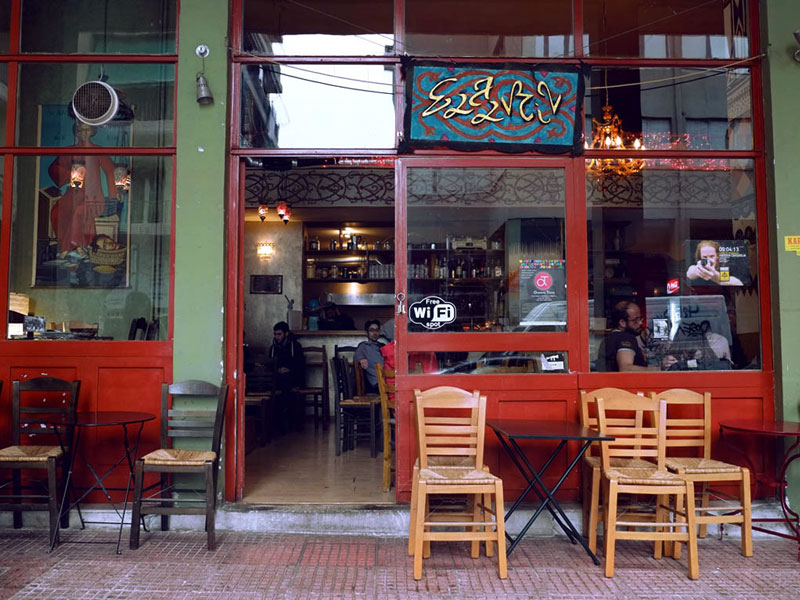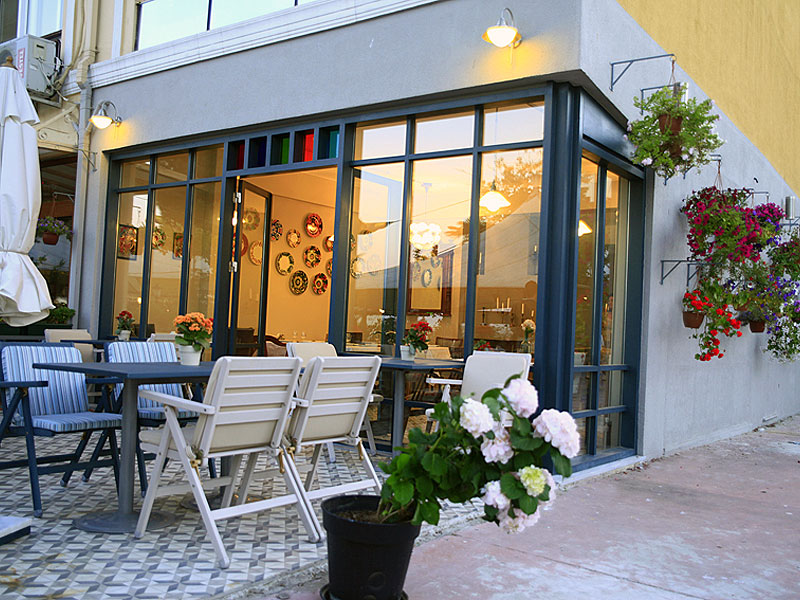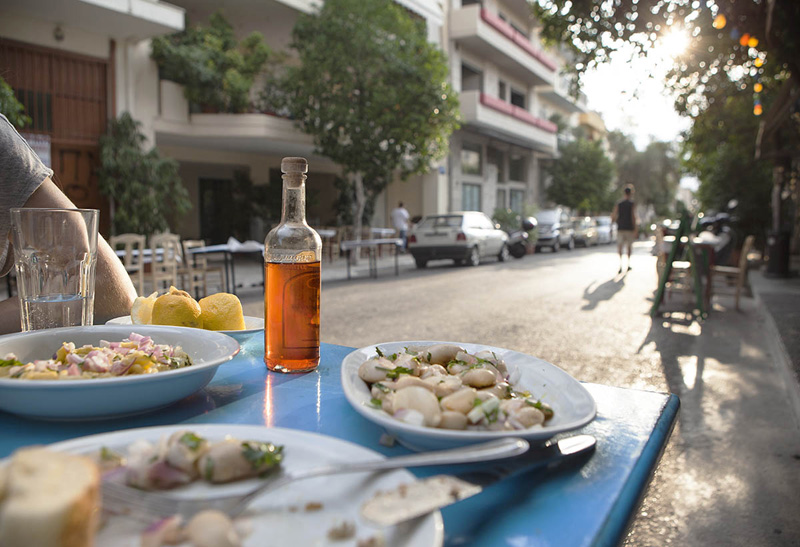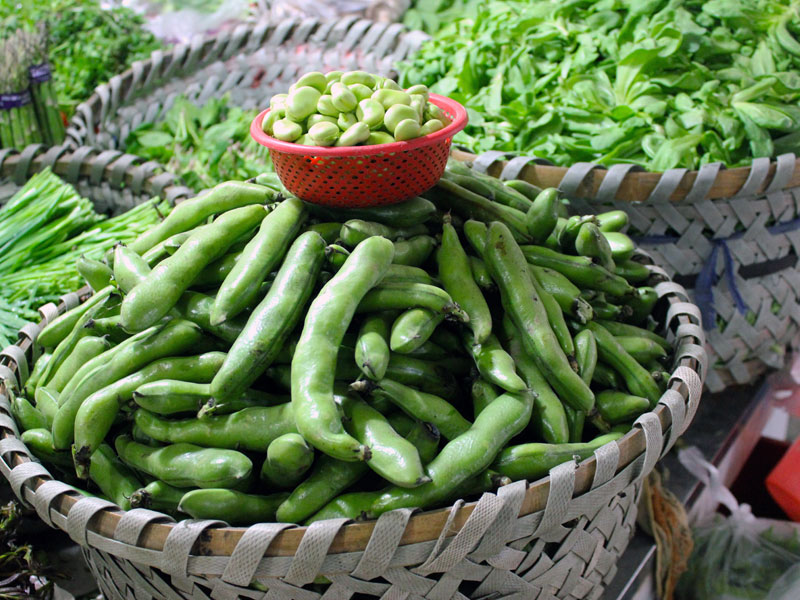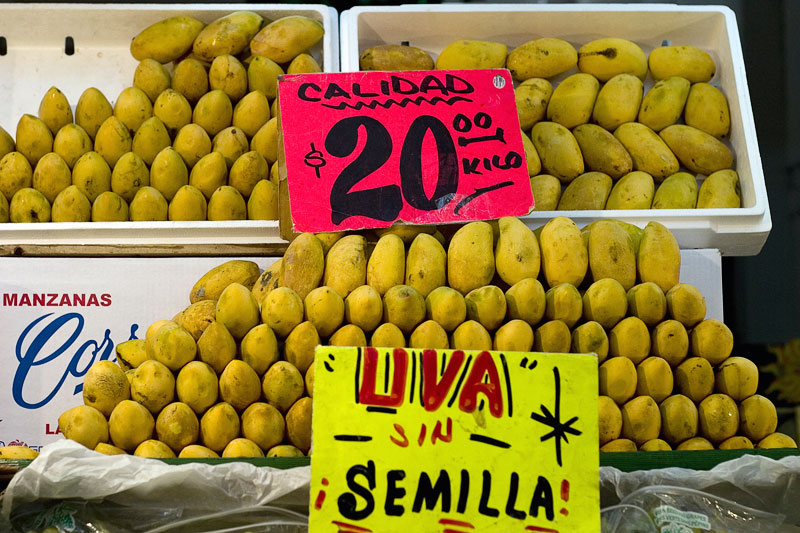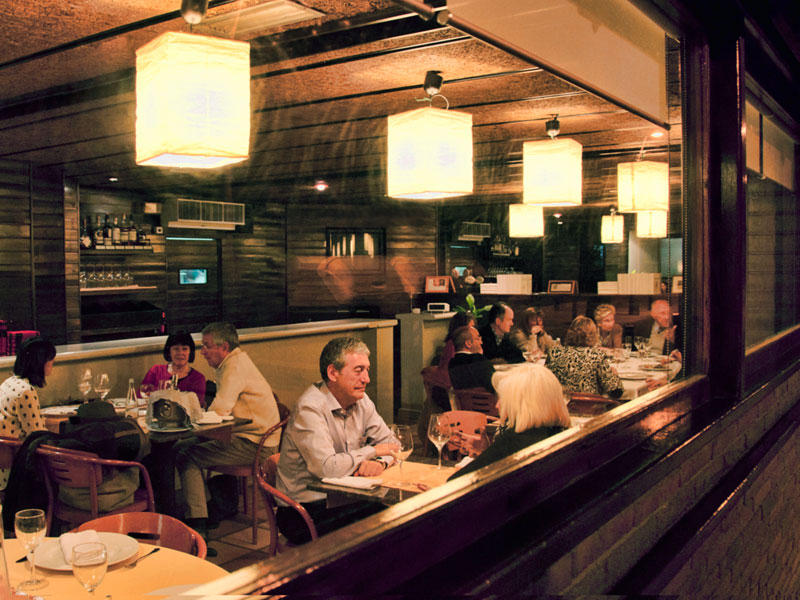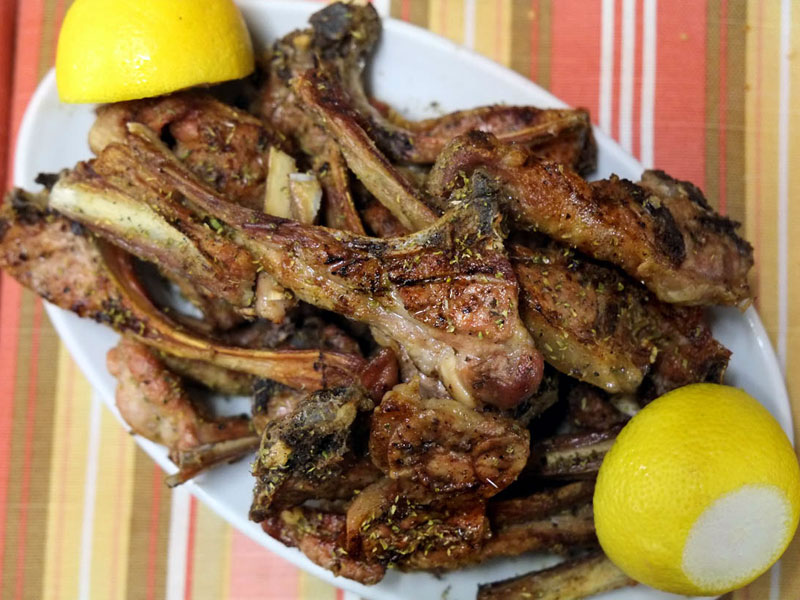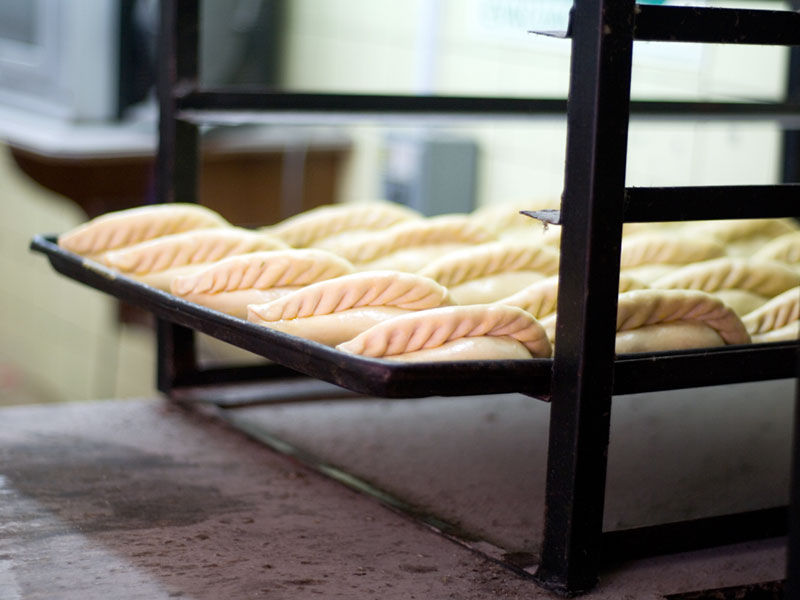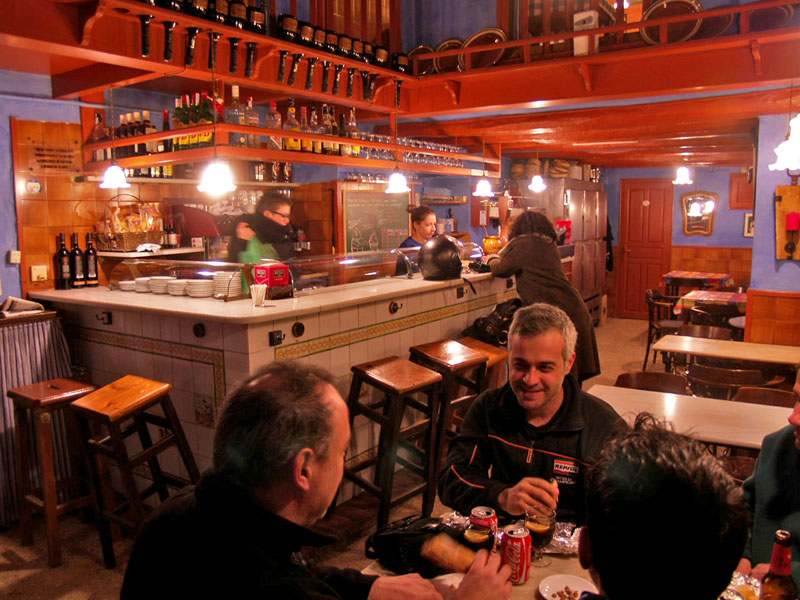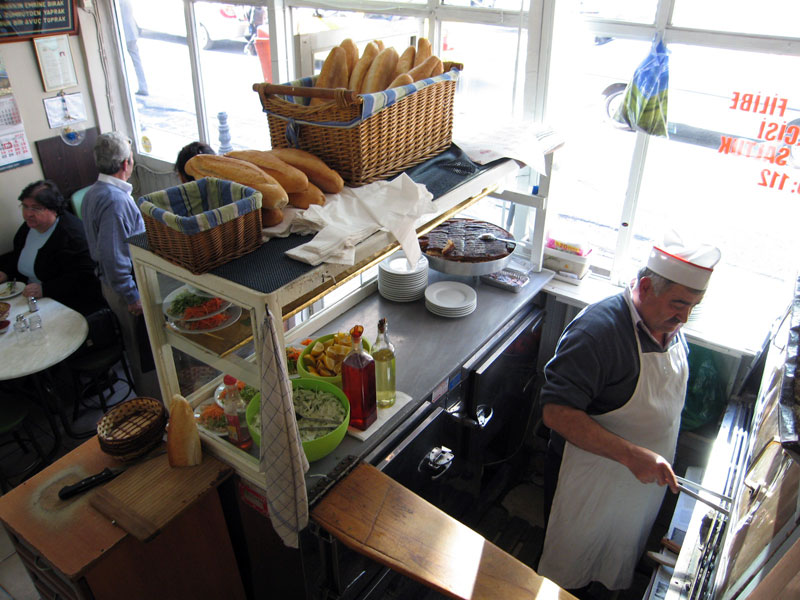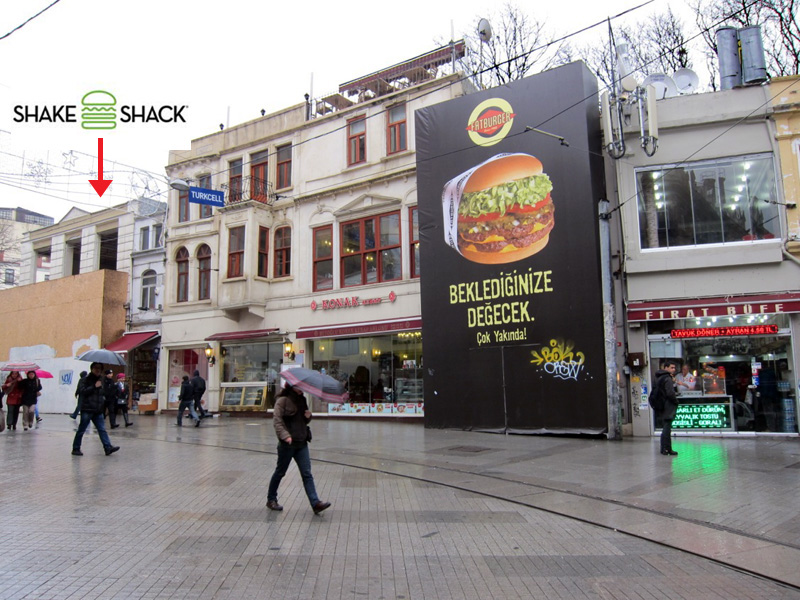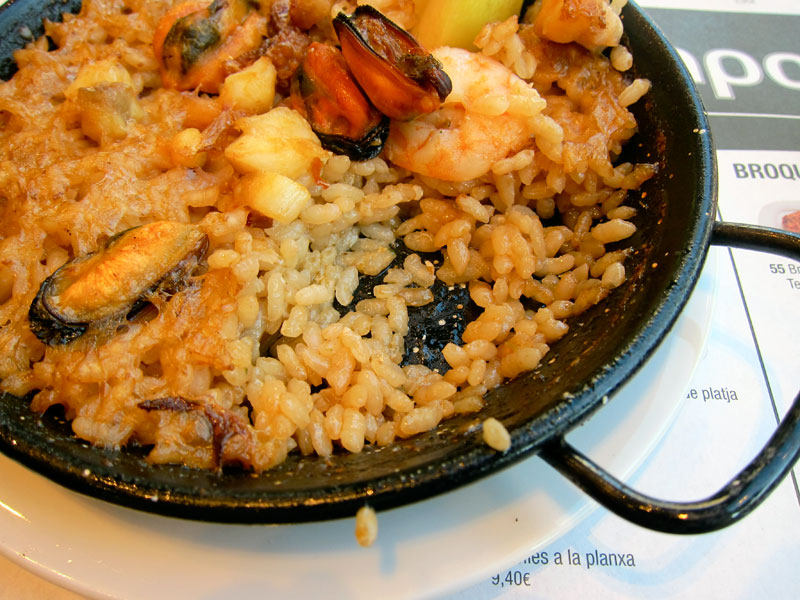We can't find the internet
Attempting to reconnect
Something went wrong!
Hang in there while we get back on track
Search results for
Istanbul
Liman Uykuluk: Sweetbreads for the People
Though it may seem bewildering or even exotic to outsiders, Istanbul’s commercial life is actually organized according to a very old, guildlike system that assigns different neighborhoods to the sale and sometimes manufacture of different types of products. If you bottom out in a pothole and need a rot balans, you head up to the Oto Sanayi area. For kitchen and bathroom accessories, the Çağlayan neighborhood is the answer. And when Istanbulites hanker for grilled sweetbreads, or uykuluk, the only suitable place to go is Sütlüce, down where the slaughterhouses used to operate on the Golden Horn.
Read moreMexico City
Hilaria Gastrobar: A New Look in the Old City
Update: This spot is sadly no longer open. Until not long ago, Francisco I. Madero was a typical – and rather uninviting – street in Mexico City’s Centro Histórico, uneven and full of potholes, with narrow sidewalks. The avenue was constantly clogged with car traffic trying to make its way to the Zócalo plaza in the center of the neighborhood. In short, it was a mess.
Read moreIstanbul
In Istanbul, a Workers’ Lunchtime Paradise Lost
In the realm of Turkey’s small businesses, the esnaf lokantası (tradesmen’s restaurant) hovers above everything like a uniting holy spirit. A good one certainly is divine in nature. Take just about any old esnaf lokantası, and you’re sure to encounter a community that only exists at that particular spot on earth.
Read moreShanghai
A Niang Mian: Grandma’s Noodles
In 2008, Shanghai’s noodle scene was dealt a mighty blow. A Niang, a granny from the ancient seaport of Ningbo who was famous among local foodies for her seafood noodles, was forced to close her streetside shop after being diagnosed with kidney disease. Over the past few decades, she’d gained a loyal following; her friendly, wrinkled face was a common sight in the dining room, as she often wandered through the hordes of hungry diners to say hello to regulars or wipe up a splash of spilled soup.
Read moreBarcelona
Pa de Sant Jordi: Barcelona's Bread of Love
In Barcelona, Valentine’s Day is no big deal. On the other hand, on April 23, you had better remember to buy a flower for your sweetheart. La Diada de Sant Jordi is one of the most important holidays in Catalonia, honoring its patron Saint George. The Catalan tradition – inspired by the legend of Saint George’s chivalrous slaying of a dragon to save a princess – is for men to buy roses for women and, in return, for women to buy books for men.
Read moreMexico City
Mexico City Tries to Shake Off Its Salt Habit
Mexican dishes are known for their bold flavor combinations, from complex mole sauces that incorporate ingredients as diverse as chilies and dark chocolate to the multiple different food items and seasonings that go into an authentic pozole. But an equally key element in Mexican food culture is that most basic of flavorings: salt. From savory dishes to fruit and candy to alcoholic beverages, Mexicans have a taste for – and a habit of – pairing salt with almost everything.
Read moreAthens
Museum Quality: Dining in Athens’ Cultural Institutions
Considering Athens’ position as a top tourist destination, it may come as a surprise that it is only recently that local museums have decided to up their game when it comes to their dining offerings. Worldwide, a good restaurant and café are now considered part of the whole museum-going experience, but it took a little time for Athenian museums to catch on to that, though catch on they have.
Read moreShanghai
Chenghuang Miao Tese Xiaochi: Divine (and Delicious) Madness
On the diner intimidation scale, Shanghai’s Chenghuang Miao Tese Xiaochi – which can be loosely translated as “City God Temple Snack Shop” – ranks pretty high, with aggressive lunchtime crowds and nothing but Chinese character-laden menus for guidance. But the payoff, a baptism by fire in authentic Chinese eating, is worth it. The hungry masses that congregate here have discovered a simple truth: the food here is quick, tasty and cheap – a gastronaut’s holy trinity.
Read moreMexico City
Las Laguneras: The Right Stuff
Update: This spot is sadly no longer open. Come Sunday, we often find ourselves strolling through leafy Parque Sullivan, which hosts Mexico City’s largest outdoor art market. The art here ranges from modern to whimsical, abstract to landscapes, created by artists who no doubt have dreams of being the next Diego Rivera or Frida Kahlo. When we get hungry, we usually head over to nearby Sullivan Market to get a taste of the culinary artistry of the food vendors working there. But on a recent Sunday, we decided to follow the advice of friends and try something new in the neighborhood: the gorditas over at Las Laguneras.
Read moreIstanbul
Perazin: That Old Meyhane Magic
Update: This spot is sadly no longer open. In an opinion piece published recently in the Latitude blog of The New York Times, veteran Turkey correspondent Andrew Finkel’s brutally honest appraisal of the state of “New Turkish Cuisine” called much of Istanbul’s restaurant establishment – down to the customers – into question. We’ve had similar misgivings after meals in some upscale nouveau meyhanes where fussy food and too much attention to interior design end up spoiling an atmosphere that is supposed to be fun.
Read moreAthens
Saladin: The Meze Conqueror
Editor’s note: We’re sorry to report that Saladin has closed. The mezedopoleio – a type of venue where mezes are passed around for all to eat – is traditionally associated with students more interested in getting drunk on cheap alcohol than savoring a nice meal. But tough times require hard drinking, which means that mezedopoleia have recently made a massive comeback in Athenian life. In the historic Keramikos area, Saladin is a venue that does double duty, fulfilling the traditional function of the mezedopoleio while taking the food component up several notches.
Read moreBarcelona
El Jabalí de Ronda: Hams and Roses
Editor’s note: We regret to report that El Jabalí de Ronda has closed. Barcelona’s Avinguda del Paral·lel was, for the first half of the 20th century, a bustling boulevard of theaters, cabarets, circus shows and risqué nightlife. Nowadays, most of the grand buildings and the glamour of the thoroughfare have been erased by the rapid changes that have taken place in Barcelona, with just a few theaters and old bars from the glory days still open. Thankfully, one of the holdouts is the quirky El Jabalí de Ronda, a combination delicatessen, butcher shop and tapas bar, which still welcomes customers with its signature legs of acorn-fed Iberian ham and its cozy terrace and vases of freshly cut flowers.
Read moreIstanbul
Heyamola Ada Lokantası: Island Time
While the Princes’ Islands make for a great escape from the city, it used to be hard to think of them as a culinary destination. That is, until Heyamola Ada Lokantası opened. The restaurant is a perfect storm of inspired food, chill ambiance and small-label Turkish wines, all at ridiculously low prices.
Read moreAthens
Therapeftirio: Diner, Heal Thyself
The literal translation for Therapeftiriο is “sanatorium,” which in this case refers not to what this restaurant might have once been but rather to the ancient Greek belief that having a good time by eating good food and drinking good wine can cure your troubles. It’s an old-fashioned name in an old-fashioned neighborhood that is fast becoming a hipster area.
Read moreMexico City
Cruz del Milagro: The Magnificent Seven (Moles)
Editor's Note: Sadly, this spot is now closed. Sometimes bureaucracy can be a blessing in disguise. Cruz del Milagro, an informal restaurant in the popular nightlife area of Zona Rosa, was originally intended to be a simple mezcalería, a place where owners Dora Jiménez and daughter Diana Herrera, the third and fourth generation in a line of mezcal producers, could share the family brand, El Rey Zapoteco Mezcal, with the growing base of mezcal aficionados in Mexico City. They were informed, however, that because of a city law, they would either have to also serve food or open a traditional full bar. Fortunately, they chose the first option and decided to focus on the specialties of their home state of Oaxaca, resulting in a menu that’s far from being an afterthought.
Read moreBarcelona
Ask CB: Eating Early in Barcelona?
Dear Culinary Backstreets, I hear that Spaniards take their dinner very late. Are there any good restaurants in Barcelona that start serving dinner before 9 p.m.? Indeed, Spaniards are notorious for eating late. Even when dining at home, the typical Spanish family doesn’t eat their dinner until around 9 or 10 p.m. – or sometimes even later! The main reason for this is that for most people in Spain, lunch – which usually consists of at least two courses and is eaten at some point between 1:30 and 4 p.m. – is the most substantial meal of the day. It makes sense, then, that nobody has much of an appetite again until late in the evening.
Read moreShanghai
Lotus Eatery: Minority Cuisine Report
Ever since former President Deng Xiaoping opened China’s economic doors to the rest of the world starting in 1979, foreigners wishing to do business in China have had to find a local partner to form a joint venture company. Though no longer a hard-and-fast requirement, that’s still the modus operandi at Lotus Eatery, where a founding partnership brings together the best of both culinary worlds: unusual yet authentic local flavors and distinctly foreign notions of consistent quality and attentive service.
Read moreIstanbul
Siirt Şeref Büryan Kebap Salonu: The Lamb Underground
Kadınlar Pazarı – a pleasant, pedestrian-only square in Istanbul’s Fatih neighborhood – is the closest thing the city has to a “Little Kurdistan.” The area is populated by migrants from Turkey’s predominantly Kurdish southeast region, and small market stalls and butcher shops selling honey, cheeses, spices and other goodies from the region surround the square. Visiting the atmospheric area is a great way to get a taste of Southeast Turkey without having to leave Istanbul.
Read moreIstanbul
Spring (Food) Break 2013: Istanbul
Editor’s note: This is the fourth installment of “Spring (Food) Break 2013,” featuring our favorite foods of the spring season in each city Culinary Backstreets covers. This year’s Nevruz celebration, an ancient welcoming of spring, may be remembered for its political significance in which a peace deal was struck between Turkish leaders and Kurdish rebels. But once the shoulder-shrugging, line-dancing, fire-jumping and ululating are over, the real bounty of the season will continue to be celebrated all over Turkey and in many Istanbul restaurants, from the chic to the shabby.
Read moreShanghai
Spring (Food) Break 2013: Shanghai
Editor’s note: This is the third installment of“Spring (Food) Break 2013,” a look at our favorite springtime foods in the cities Culinary Backstreets covers. In Shanghai, wet markets hold the telltale signs that spring is finally upon us. Stalks of asparagus as thick as a thumb spring up first, alongside brown and white bamboo shoots so freshly pulled from the earth that dirt still clings to their fibrous shells. But the most exciting spring green is fava beans (蚕豆, cándòu), also known as broad beans. Their short season in Shanghai – usually just about four to five weeks – means they’re in high demand, and stalls are filled with workers shelling the labor-intensive beans by the bushel.
Read moreMexico City
Spring (Food) Break 2013: Mexico City
Editor’s note: This is the second installment of “Spring (Food) Break 2013,” our weeklong celebration of spring’s culinary bounty. This guest post is by Lesley Téllez, a freelance writer and the author of the blog The Mija Chronicles, who recently moved to New York after four years in Mexico City.
Read moreAthens
Spring (Food) Break 2013: Athens
Editor’s note: Here at Culinary Backstreets, we eagerly await the coming of spring each year, not just for the nicer weather but also because some of our favorite foods and dishes are at their best – or indeed, are only available – for a short period during this season. This post from Athens is the first installment of “Spring (Food) Break 2013,” a weeklong celebration of our favorite springtime eats. Stay tuned for dispatches from all of the Culinary Backstreets cities. Athens is probably at its prettiest in springtime, especially in April and May.
Read moreMexico City
In Mexico, a Cuisine Born from Corn
Humanity came from corn, or so says the Mayan creation story, the Popol Vuh. After creating the earth and animals, the story goes, the Maker decided to create beings in his likeness. After failing twice with dirt and wood, the Maker formed man and woman out of the “nourishing life” of ground corn. And so began Mexico’s deep relationship with one of the most widely used crops in human history, one that seems to be present in almost every aspect of Mexican cooking.
Read moreBarcelona
Restaurant Roma: Comfort Food, Catalan Style
At first glance, Restaurant Roma doesn’t appear to be anything out of the ordinary. The nondescript brown tiles covering the floors, the dark wood bar, the vaguely Mediterranean-inspired wall décor and the rectangular paper Ikea lamps are similar to those at hundreds of other midrange restaurants throughout Barcelona. Situated on a quiet street in residential Sant Gervasi, Roma isn’t somewhere you’d be likely to come across accidentally, nor is it the kind of place you’d happen to hear about, unless you (or your aunt, or coworker or a friend of a friend) lived nearby. And that would be a shame because the food at Roma is good – ridiculously delicious, in fact.
Read moreAthens
To Koutouki tou Marathoniti: Underground Chops
Mets is undeniably one of central Athens’ prettiest neighborhoods, a mostly residential area filled with a mix of neoclassical houses, Bauhaus architecture and 1960s-era buildings that is also home to the city’s historic First Cemetery. Legend has it that the neighborhood was named after a beer parlor that was in turn named after the city of Metz in northeastern France. On the periphery of Mets, hidden rather incongruously in the basement of an old building, To Koutouki tou Marathoniti is the kind of place you would never find if you didn’t know it existed.
Read moreShanghai
Ask CB: The Ethics and Politics of Shark Fin Soup?
Dear Culinary Backstreets, I’ve been hearing a lot about shark fin soup in the news lately, from countries banning the dish to people protesting government intervention. What’s all the fuss about? Imagine a wedding without Champagne. No popping corks, no celebratory toasts, no drunkenly giddy bridesmaids. Sounds like a nightmare, right? Shark fin soup is the Chinese equivalent of bubbly – only fermenting grapes has little effect on the environment, while the practice of “finning” has seriously jeopardized the survival of some species of this ancient fish. To harvest the goods, fisherman chop off a shark’s fins, then dump the still-living creature back into the water. Without its fins, the shark cannot swim and either sinks to the bottom of the ocean, where it drowns, or is eaten alive by other predators.
Read moreShanghai
Wei Xiang Zhai: One-Dish Wonder
Sometimes a word in Chinese so perfectly captures a mood or feeling that the English approximation seems woefully inadequate. To take one example, the Chinese combine “hot” (热) and “noise” (闹) to describe the loud and lively nature of local hotspots, but in English, the best we can do is “bustling.” To experience what China’s “hot noise” is really all about, head to Wei Xiang Zhai. Not for the claustrophobic or timid, this wildly popular noodle house demands that you elbow your way to a table for your chance to slurp down a bowl of the city’s best sesame paste noodles (麻酱面, májiàng miàn).
Read moreBarcelona
When the Going Gets Tough, the Catalonians Get Brewing
Once a mostly beer-free country, Spain – traditionally a land of wine drinkers – has recently started to develop a taste for the sudsy beverage, and Catalonians seem to have been the main pioneers behind this growing trend. The number of local craft breweries is increasing and so is the number of beer fans, who are also learning how to brew the drink at home. Put it all together and you have a young and adventurous market that is ready to experiment with tastes and textures to create stellar new beers with a distinct Mediterranean flavor.
Read moreIstanbul
Istanbul’s Top 3 Lahmacun Makers
Lahmacun is one of those mysterious foods where a lot is created with so little. It checks all of the boxes of a perfect savory snack: crispy, oven-fired crust, light and spicy meat spread, a fresh green garnish and a tangy spray from a lemon. It’s like an artisanal pizza with a Middle Eastern topping wrapped around a side salad – for the cost of a shoeshine.
Read moreIstanbul
Gazoz: Turkish Fizzardry
In a 2003 TV commercial for Cola Turka, the actor Chevy Chase was seen speaking Turkish and then sporting a moustache, after taking just one sip of the intended challenger of Coke in this country. This sensational ad – which riffed on the old theme of American cultural imperialism through its number-one agent, Coca-Cola – was the first time that Turkish soft drinks caught our attention. Though we didn’t take to the overly sweet Cola Turka, we did start looking beyond, to its local brethren in the market: gazoz, a world of nearly extinct Turkish carbonated drink brands with a fanatical following.
Read moreMexico City
Pastes Real de Pachuca: Hot Pocket Goldmine
Update: This spot is sadly no longer open. For weeks we had been passing by a small venue that filled the sidewalk with the heavenly scent of butter and pastry dough, before we finally had the chance to stop in and investigate. The source of the intoxicating aroma turned out to be Pastes Real de Pachuca, a neighborhood bakery in middle-class Colonia Tabacalera that makes excellent empanadas and pastes, a type of pastry that’s a specialty of Mexico’s Hidalgo state but hard to find in Mexico City.
Read moreAthens
To Rodi
A quiet residential area in Western Athens, the working-class suburb of Sepolia was until the 1970s characterized by a few industrial buildings, empty plots of land and small, humble houses. Over the past few decades, Sepolia has developed rapidly and is now full of high-rise apartment buildings. Though it still has a neighborhood feel, there aren’t many cafés or dining venues, which makes To Rodi – an Armenian restaurant and neighborhood souvlaki place that does some of the best kebabs in Athens – seem particularly incongruous.
Read moreAthens
Phaleron: Athens’ Culinary Museum of Innocence
Once a resort town on the outskirts of the Greek capital, Phaleron – only a few miles from downtown Athens – is now well incorporated into the city’s urban fabric. The area has remained an upscale neighborhood, but, sadly, it has lost its distinctive character: the sea is now polluted, the open-air cinemas have been turned into parking lots, and many of the stately mansions were demolished to make way for apartment blocks during the construction boom of the 1960s.
Read moreBarcelona
Mercè Vins: Home Away From Office
Editor's Note: Sadly, this spot is now closed. Mercè Vins is exactly between two worlds, located on the quiet, narrow and dark Carrer d’Amargós, close to the shopping area of Portal de l’Àngel, near the Cathedral and Plaça de Sant Jaume, and on the border between the Barrio Gótico and Born neighborhoods, where there are numerous offices and public institutions, filled with employees looking for a breakfast that goes beyond a sad, ersatz “croissant” or for a lunch that approximates the kind of meal they would get if they were able to sneak back home.
Read moreIstanbul
Meşhur Filibe Köftecisi: Keeping Their Eye on the Meatball
Where we come from, flipping burgers is a time-honored tradition among pimply teenagers looking for a summer job and troubled short-order cooks looking for a place to land in between firings. It’s work that promises mobility, not stability. But don’t tell that to Ziver Usta, who’s been turning the köfte – something like Turkey’s equivalent of the hamburger – at the grill of the shoe-box-sized Meşhur Filibe Köftecisi in Sirkeci for the last 30 years. The dough-faced Ziver, in his early fifties, is actually the restaurant’s junior employee – “head waiter” Mehmet has been there for 40 years – but his long tenure means he’s only one of a select handful of grill masters who have worked at Filibe over the course of its 100-year history.
Read moreMexico City
El Profe: Barbacoa Master Class
One of our favorite markets in Mexico City, Mercado Jamaica is a fantastic destination any time of the year, offering everything from festive Christmas decorations to a large selection of fruits and vegetables. After the markets of Xochimilco, Jamaica is also one of the city’s best flower markets, with block-long aisles filled with freshly cut flowers and plants of almost every imaginable color and type. But as much as we love getting lost in the sweet scents of these green alleyways, what keeps us coming back to Jamaica is El Profe, an excellent eatery inside the market that specializes in barbacoa. El Profe ("The Prof") looks less like your typical market food stand and more like a mini restaurant, with small brass chandeliers hanging from the ceiling that provide more in the way of ambiance than actual light. Waiters and cooks in matching blue uniforms hustle and bustle around the customers, who come and go from the counter at a steady pace.
Read moreBarcelona
Bar Bodega Quimet: Same As It Ever Was
De toda la vida is a Spanish expression that basically means “It’s been around forever,” and it’s a sure thing that the locals in Barcelona’s Gràcia neighborhood will utter those words if you ask them about Bodega Quimet. Opened in the 1950s by the Quimet family, the bodega (not to be confused with Quimet i Quimet, a popular Barcelona tapas bar) was passed down from father to son until 2010, when the younger (but nonetheless old) Quimet retired and brothers Carlos and David Montero bought the venue. David Montero had always worked as a cook and dreamed of owning his own place. However, after buying Quimet, instead of doing the renovations so typical of Barcelona bars that change hands (such as modernizing the furnishings or installing a huge flat-screen TV for showing fútbol matches), the Montero brothers made the somewhat unusual decision to keep everything, from the low prices to the décor, pretty much the same as it always had been.
Read moreAthens
Ask CB: Greek Coffee in Athens?
Dear Culinary Backstreets, I keep hearing about Greek coffee but is it any different from Turkish coffee? And do most Greeks actually drink Greek coffee these days or do they drink other types of coffee? Greek coffee is exactly the same as Turkish coffee – and it was in fact called just that in Greece until Turkey invaded Cyprus in 1974, at which point, for political reasons, the Greeks decided to rename their coffee “Greek coffee.” The process and preparation, though, are identical to the Turkish way.
Read moreIstanbul
Istanbul’s Burger Battle Goes International
Update: Shake shack and Fatburger are sadly no longer open. As chronicled by Istanbul Eats, the Tünel end of Istanbul’s famed İstiklal boulevard was some two years ago the site of a heated burger war. It all started when a former Turkish basketball-player-turned-restaurateur who had spent time studying in California opened up Mano Burger, a mostly successful recreation of the kind of burger joints the owner frequented in the United States.
Read moreAthens
Athens’ New-School Wine Bars
The economic crisis that has plagued Greece for the past five years has led to changes on the Athenian culinary scene, including the opening of three new types of venues that seem to be reflective of the times. The first two – cupcake places and frozen yogurt shops – are imports from abroad, perhaps indicative of a population in need of something sweet, comforting and affordable. On the other hand, the third trend, wine bars, digs deep into Greece’s roots, representing a fascinating phenomenon in a country that is one of the world’s oldest wine-producing regions. In antiquity Greek wine was exported across the Mediterranean, and the winemaking tradition has remained strong through the millennia. Yet although there are numerous wineries around the country, in the modern era Greek wine has never achieved the place it deserves on the international market. Production levels are low and vintners have long been unsure of how to market abroad.
Read moreMexico City
Coox Hanal: Peninsular Gastronomy
The holiday season is one of the more subdued times of the year in Mexico City. Many people leave the city for vacation or to visit family and friends in other parts of the country. We, however, tend to stick around more often than not, traveling around the city and enjoying the relative peace. That’s how we happened upon Coox Hanal, a restaurant hidden inside a century-old building in the Centro Histórico that specializes in the cuisine of the Yucatán, the peninsula that juts out into the Gulf of Mexico and the Caribbean Sea like a hitchhiker’s thumb.
Read moreBarcelona
Barcelona’s Restaurants Go Underground
At Culinary Backstreets, we are all about seeking out backstreets eating at venues serving authentic cuisine and frequented mainly by locals – an approach that usually leads both to delicious food and to prices that won’t break the bank. But how about underground dining, where even locals themselves aren’t always in on the secret?
Read moreIstanbul
Mustafa Amca: Soul Proprietor
The Turkish proverb “At, avrat, silah ödünç verilmez” (“neither horse, wife nor weapon should be lent”) is sometimes repeated as a way to recall the nomadic warrior past of the Turks. The primal Turkish essentials are clearly stated, but what about the çay bardağı, the tea glass that has become such a ubiquitous Turkish icon? Reading the 17th-century works of Evliya Çelebi, the Ottoman Rick Steves, you’d expect to find descriptions of medieval tea jockeys swinging trays filled with those tulip-shaped glasses through the alleyways of the Old City. Right?
Read moreShanghai
Enter the Snake: Eating Your Way to a Happy New Year
As the moon starts to wane each January, people throughout China frantically snatch up train and bus tickets, eager to start the return journey to their hometown to celebrate the Lunar New Year (春节, chūnjié) with their family. One of the major draws for migrant workers heading home is the chance to eat traditional, home-cooked meals.
Read moreAthens
Red Elephant: Move Over, Souvlaki
The first wave of Indian, Pakistani and Bangladeshi immigrants arrived in Athens in the early 2000s, bringing a new eating culture with them. This was a time of prosperity in Greece and consequently the first South Asian restaurants, such as the now-defunct Pak Indian, were welcomed with open arms by Greeks who were willing to experiment. It helped that an enormous number of young Greeks had studied abroad in the 1990s and early 2000s, mainly in the United Kingdom, where they were introduced to the cuisine of the Subcontinent.
Read more